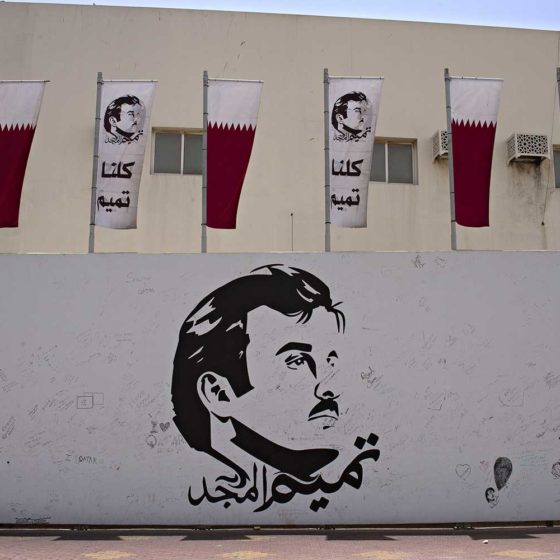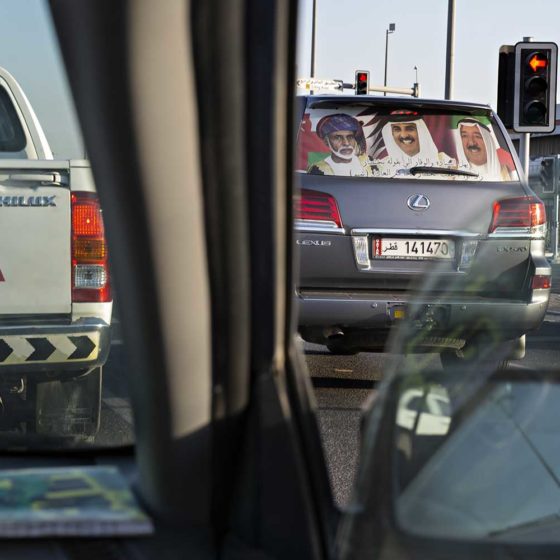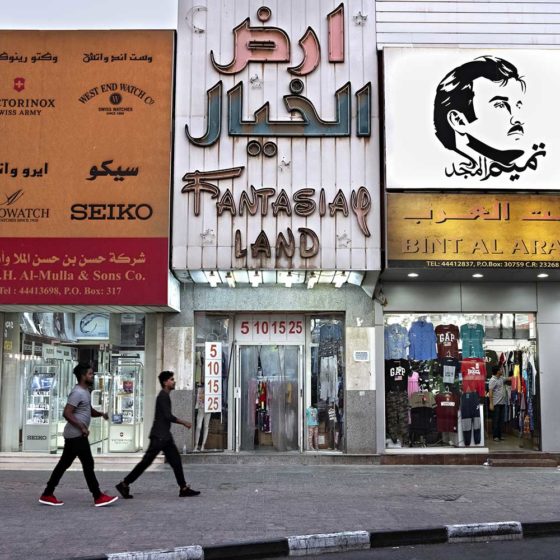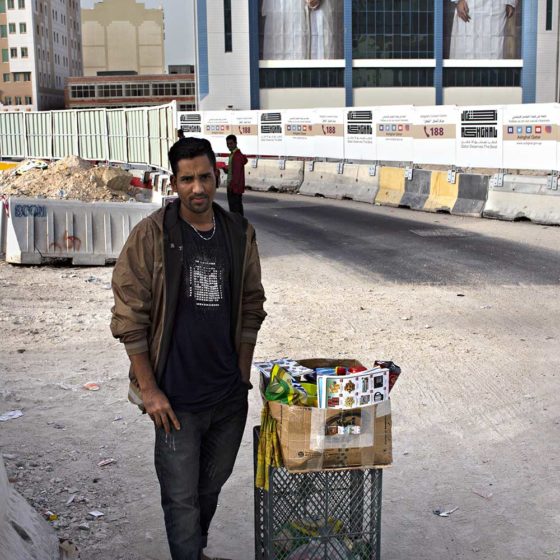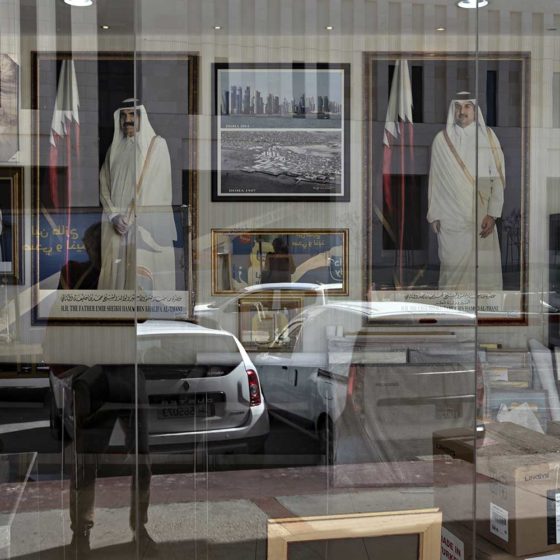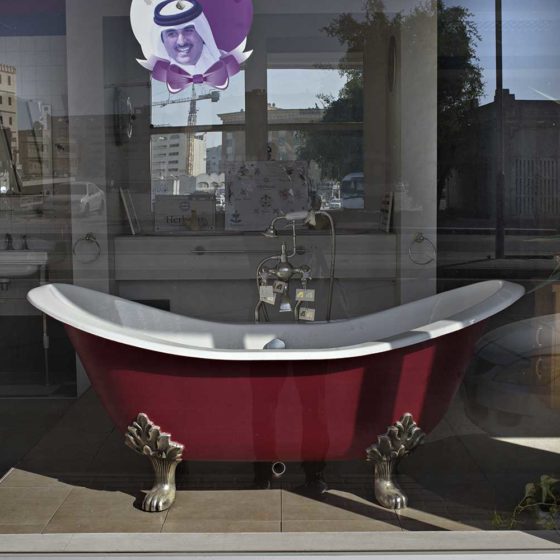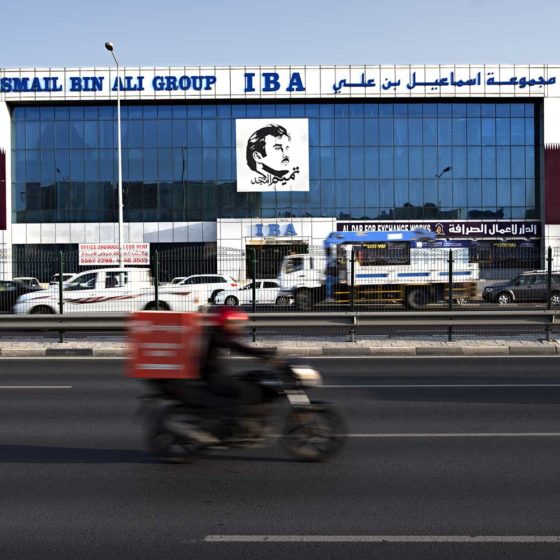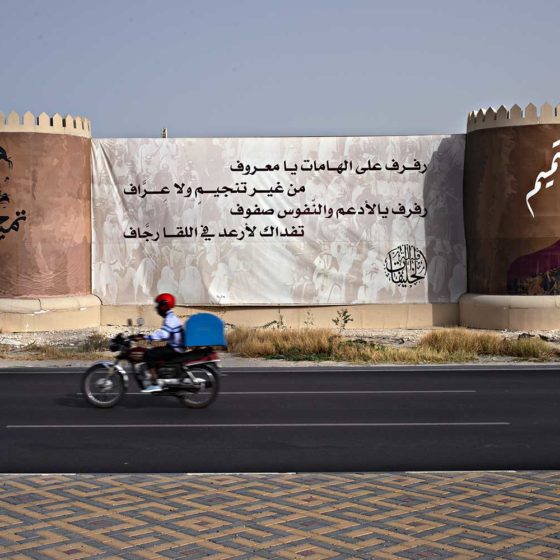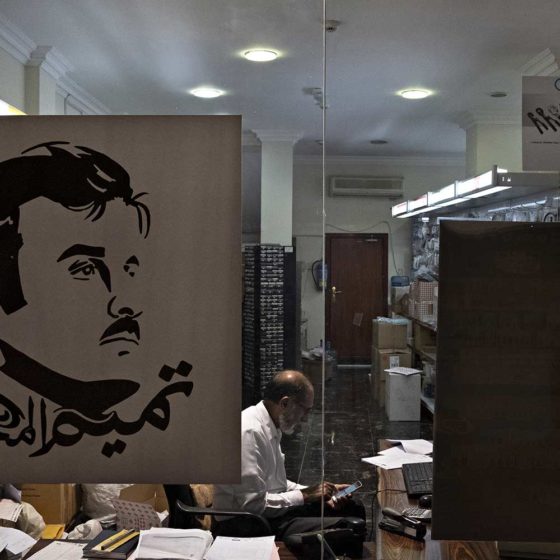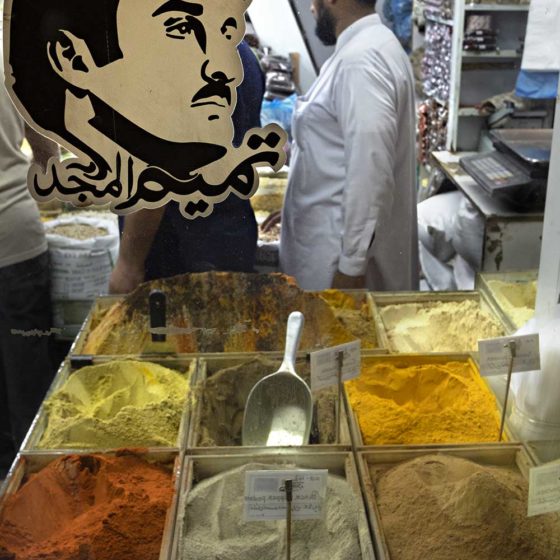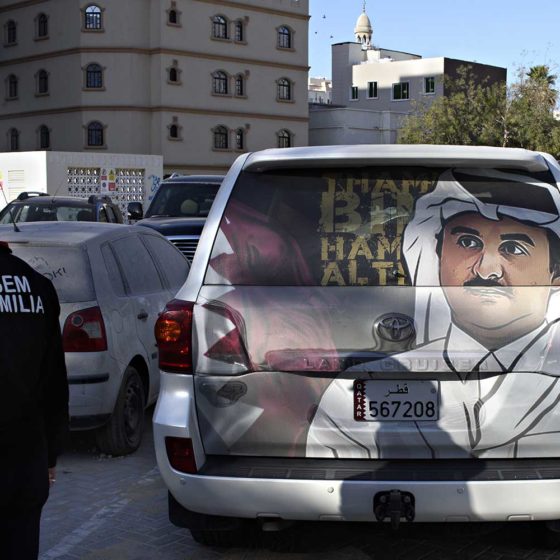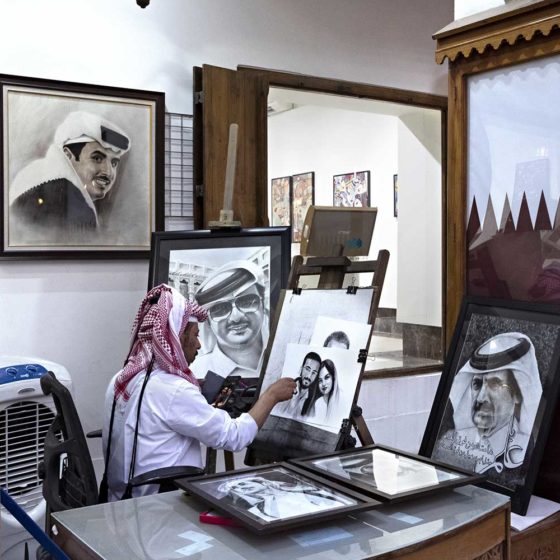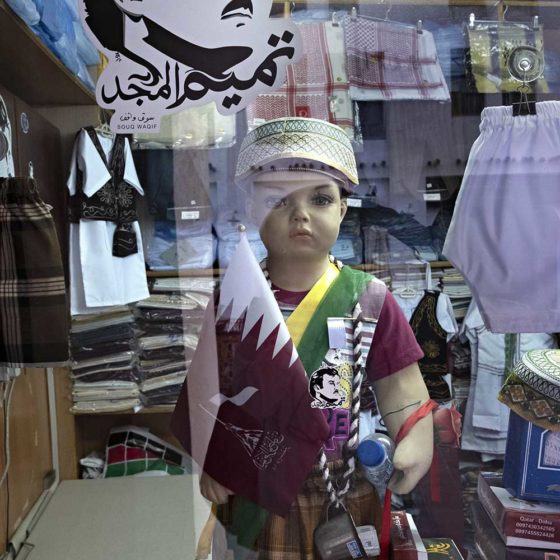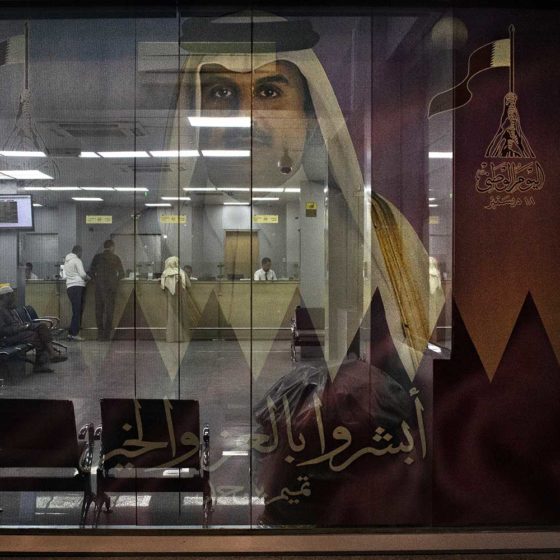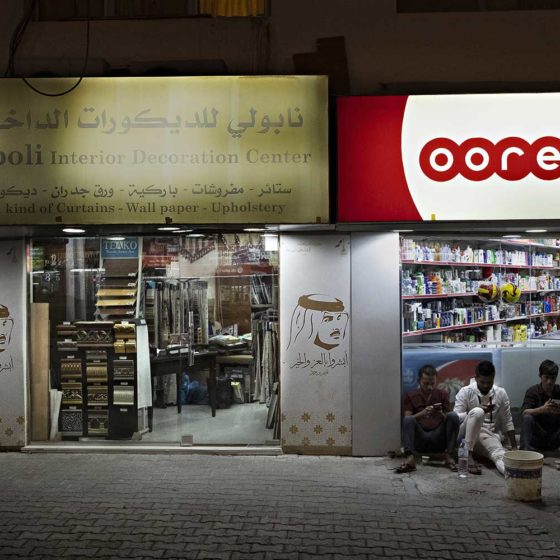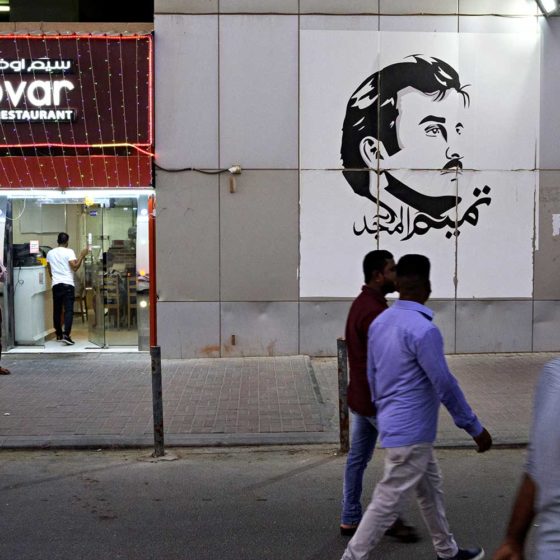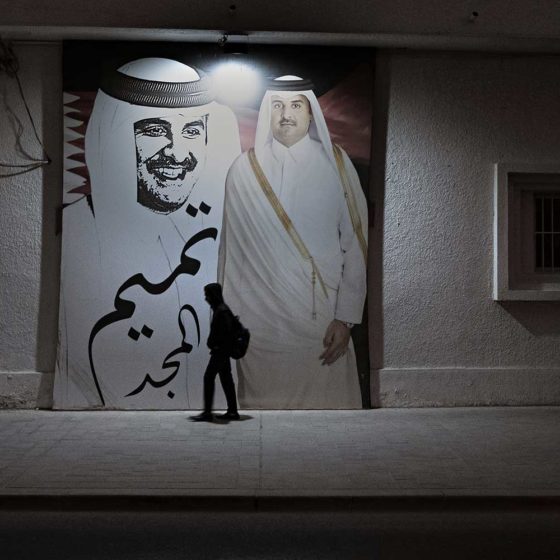QATAR 2016-2019 / Set C
Qatar is an extraordinary country.
Its total population grew approx. 24-times from approx. 111,000 in 1970 to approx. 2,687,000 at the end of 2019. Of the latter, approx. 336,000 were Qataris and approx. 2,351,000 were non-Qataris.
Qatar possesses the world’s third largest gas and oil reserves. It has the world’s highest income per capita. It has adopted a very ambitious model of development.
Politically and diplomatically, it seeks to play a role reflecting its wealth more than its size.
This is also reflected by the fact that Qatar organises the soccer World Cup of 2022. The total costs of the event, including the construction of stadiums, metro lines and other infrastructure, is estimated at approx. 200 billion USD.
All this has resulted in a continuously changing urban landscape where especially in downtown Doha the recent new is considered already old and being replaced by the present new.
Along with the enormous economic changes, profound social changes have taken place over the past fifty years, with an acceleration over the past two decades. Health care and education has improved tremendously. Qataris are well-educated, fertility has decreased rapidly, women employment has increased, to mention three key developments.
In the light of these changes, reasserting the Qatari national identity has been a major concern of the rulers. This has, among other things, materialized in the (re)construction of heritage areas and major museums, including the Souq Waqif (reconstructed market, 2008), the Museum of Islamic Art (2008), the Katara Cultural Village (2010), the Msheireb Museums (2015), culminating in the National Museum of Qatar (2019).
In June 2017, Bahrain, Egypt, Saudi Arabia and the United Arab Emirates (UAE) imposed a land, air and sea blockade on Qatar presenting a list of demands. Instead of giving in, Qatar resorted to an enormous reorganisation of its supply chains and accelerating its efforts to become much more self-reliant. It also resulted in a reinforcement of national unity and the support for the Emir Sheikh Tamim bin Hamad Al Thani (born 1980) in power since 2013.
Qatar is a small country (11,500 km2 – 158th in the world); is basically flat (highest elevation 103 m), and is a barren desert covered with sand and gravel. Its climate is arid (but there is occasional torrential rain), very hot (40-45° C in summer but relatively cool winter), and humid (notably in the summer).
Cars are central in Qatar’s life. Highways resemble those of Southern California more than the size of the country. Traffic is sometimes extremely heavy in an around the capital Doha. The newly build metro may serve to alleviate some of the congestion. But Qataris are unlikely going to give up their cars, even occasionally but then, there numbers are small.
Shopping malls and hypermarkets are essential to Qatar’s life. New ones are being built continuously while older ones or becoming out-fashioned. They all provide not only for goods but also for cooling and spaces for socialising.
While Qataris are well-educated, work force participation is not high (notably among women). In any case, the limited number of nationals is by far insufficient to cover all the jobs the countries development strategy and its citizen’s requests demand. No Qatari works in a low-skilled, low-income job. Non-Qatari’s, instead provide for the full range of jobs. Europeans and other westerners for highly skilled. Arabs and Asians (notably Indians, Pakistani, Bangladeshi, Filipinos, etc.) for low-skilled, mid-skilled and, to a limited extent, for highly skilled jobs.
Working and living conditions for the low-skilled workers in the construction and service (hotel, restaurant, taxi, cleaning) and domestic-work sectors have been rightly heavily criticized and scrutinised. Since 2018, Qatar has taken a long overdue path of reform in cooperation with the International Labour Organisation (ILO). Even if the reform will increase the costs to the country and its citizens, being one of the richest countries in the world and its citizens having the highest world’s highest GDP, this reform is not only legally mandatory but also an ethically obligation. Today (March 2020), it is too early to make a comprehensive assessment of the impact of the reforms on the working and living conditions of the low-skilled non-Qataris.
Initially, various thousands of pictures were brought down to approx. one-thousand. These were further reduced to 150 and then to 72. The main criterion was the artistic quality of the picture, the second criterion was the need to create a comprehensive view of what I have seen. The 72 selected pictures were divided into two sets of 36. Both are published on this website. The first set has also been printed and is exhibited in my studio “La Pace 72”.
Besides these two sets, a third set of 23 pictures was made of the iconography of Sheikh Tamim bin Hamad Al Thani Emir of Qatar which emerged as a response to the June 2017 blockade.
